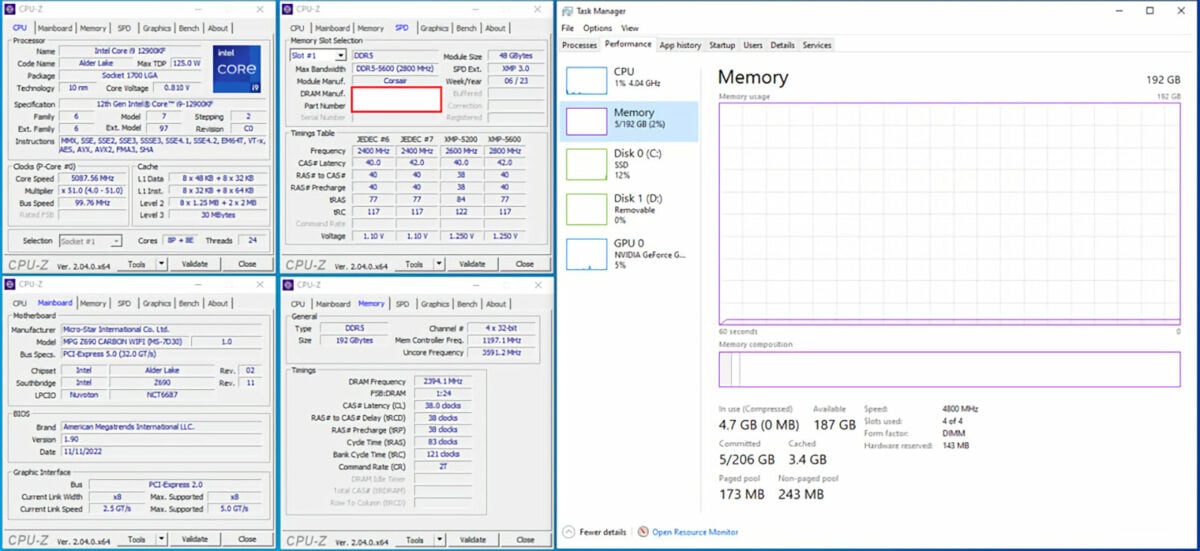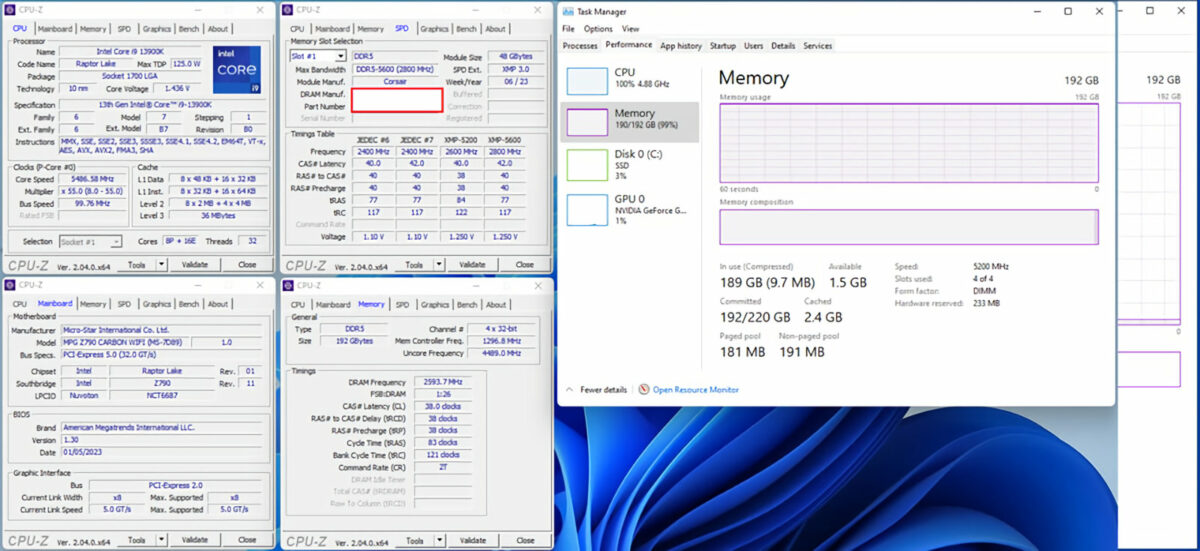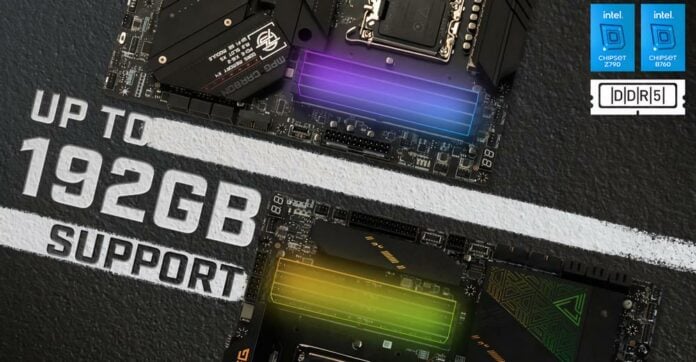MSI has unveiled that its Intel 700- and 600-Series motherboards now support 24GB and 48GB memory modules for a total of up to 192GB per board.
Following Crucial presentation of upcoming 24GB DDR5-5600 CL46 and 48GB DDR5-5600 CL46 memory modules, MSI now confirms that MEG, MPG, MAG, and PRO Series motherboards are ready for them. At least regarding Intel 12th- and 13th Gen-compatible products, since there is no word yet about AMD. MSI has also said that a BIOS update isn’t required to benefit from these higher capacity DIMMs.

The brand has published two testing screenshots clearly showing 192GB on Windows Task Manager using two different systems. The first is powered by an MSI MPG Z690 Carbon WiFi, an Intel i9-12900KF CPU, plus 4x48GB DDR5-5600 CL38 at 1.25V from Corsair, with the second rocking MSI’s MPG Z790 Carbon WiFi, an i9-13900K, and 4x48GB DDR5-5600 CL38 from Corsair. Finally, MSI announces that C0- and H0-stepping for Intel’s 12th Gen, plus B0, C0, and H0 for Intel’s 13th Gen CPUs support 24GB/48GB modules on Z790, B760, Z690, B660, and H610 motherboards.

Assuming performance – i.e. frequency and latency – is kept equal to currently available 32GB modules, 64GB extra memory (for a 192GB total) can go a long way for those who need it. But, if this much memory is needed, wouldn’t it be better to move to a Threadripper or even an Epyc-based platform? As usual, it depends. If the workload benefits from more CPU horsepower, a Threadripper would pay for itself, however, if the task is just a memory hog, then the added cost, heat output, and power consumption of server-grade hardware may not be worth it.
One of the tasks that can perfectly suit these modules is small virtualisation setups, with something like a 12-core CPU plus 48GB of RAM (4GB per core), or dual-purpose machines (e.g. gaming/content creation) which requires a good amount of fast memory – a thing that may not be possible when populating more than two memory DIMMs, due to frequency degradation.

